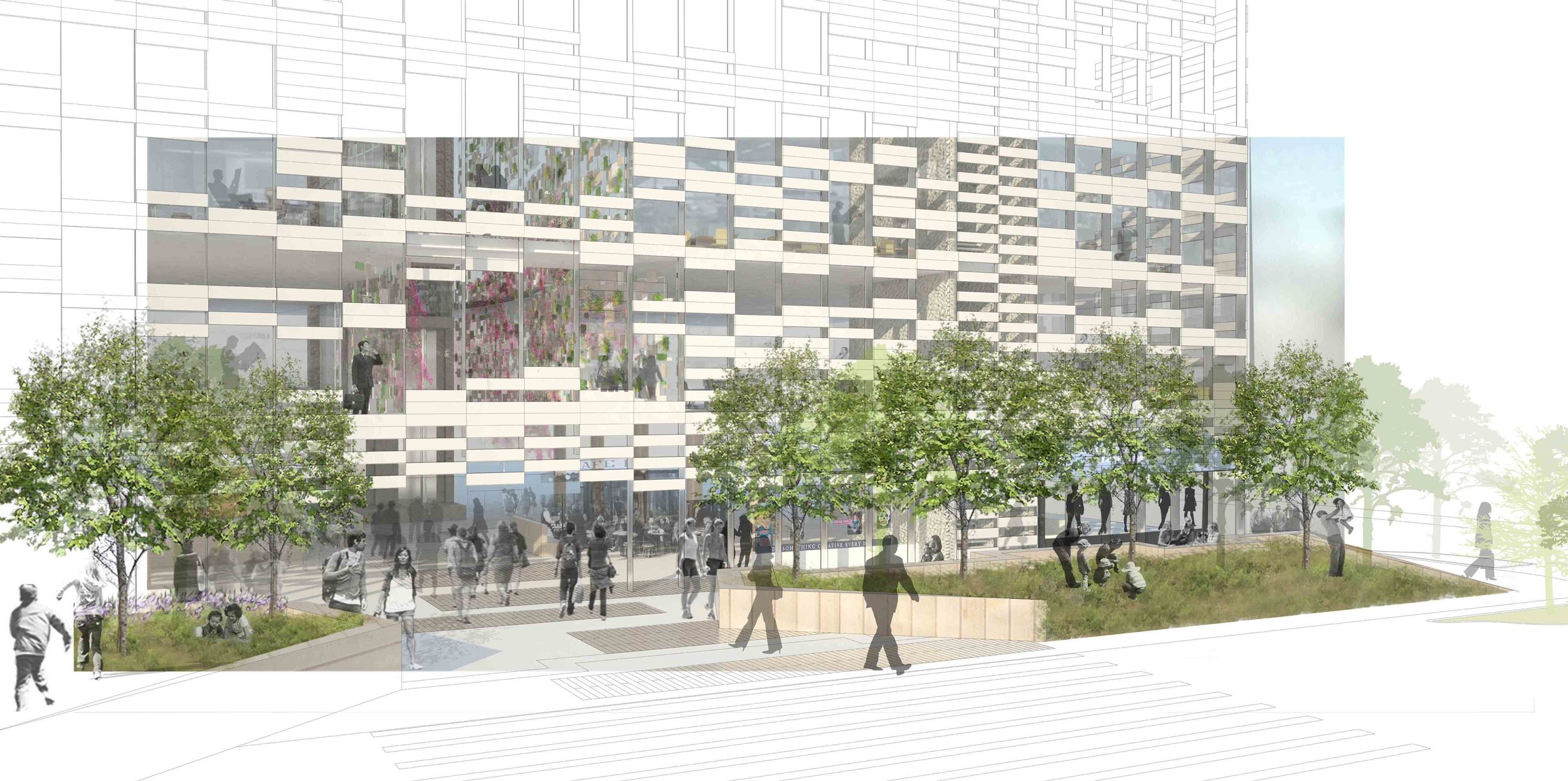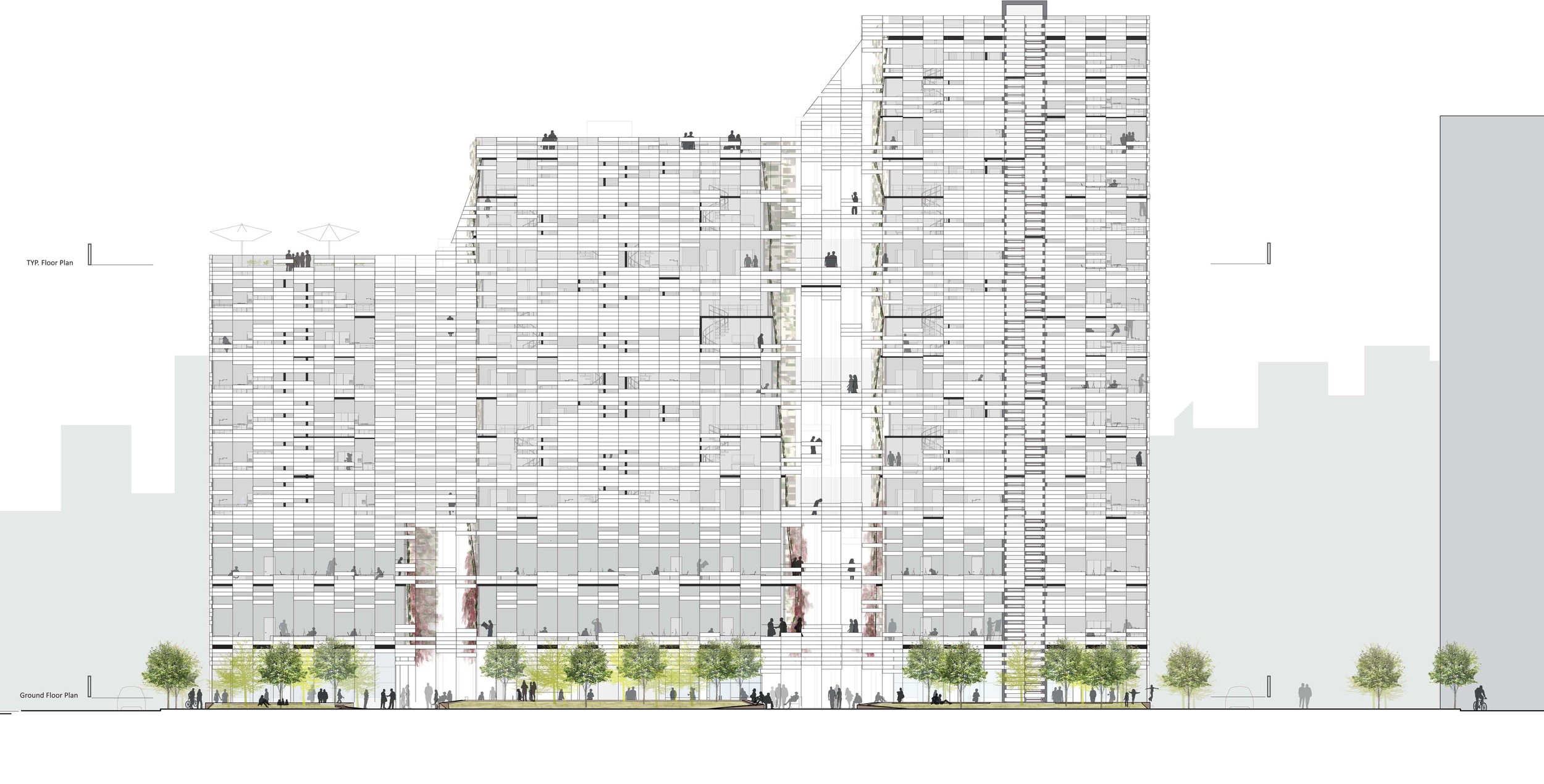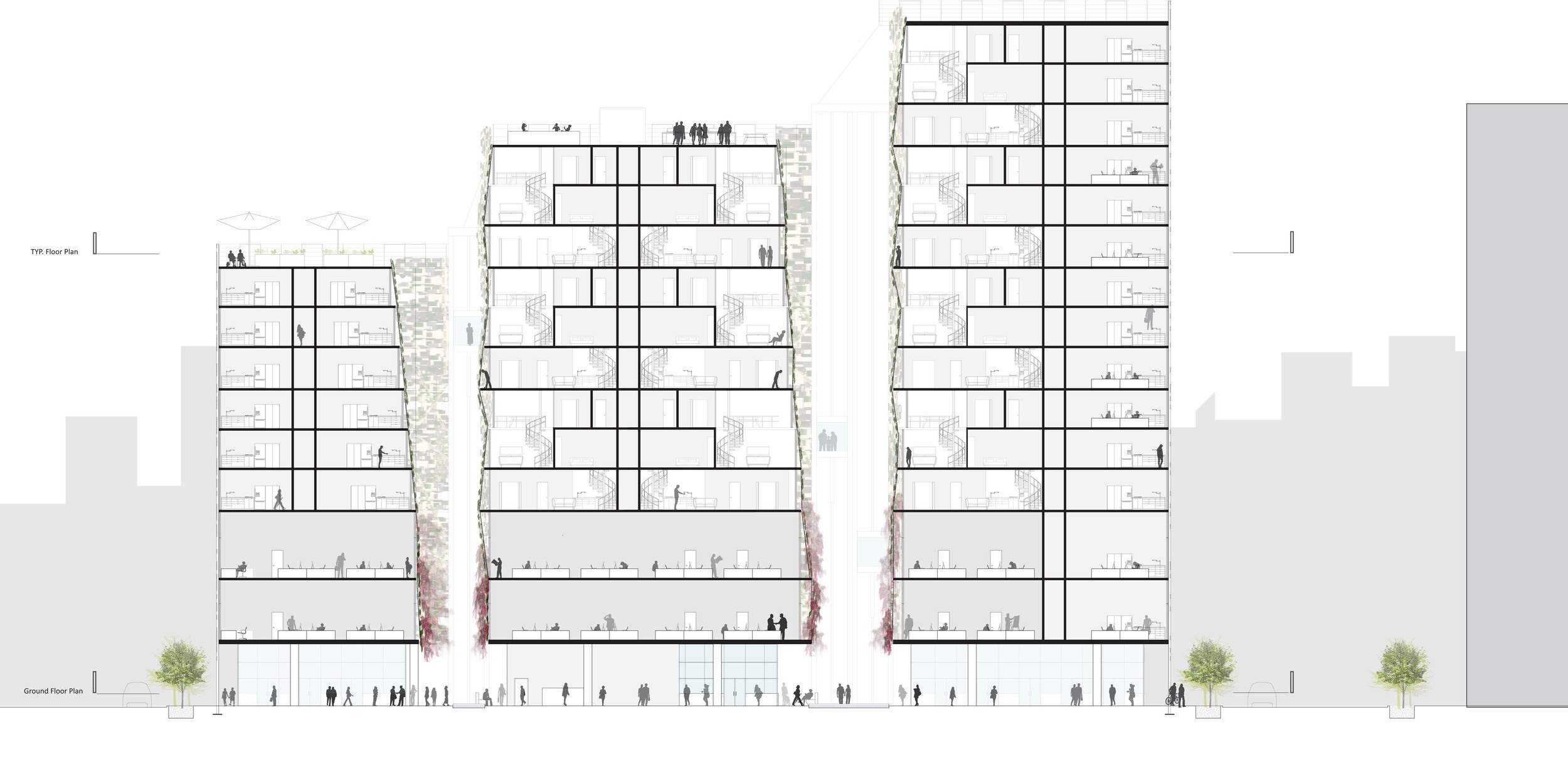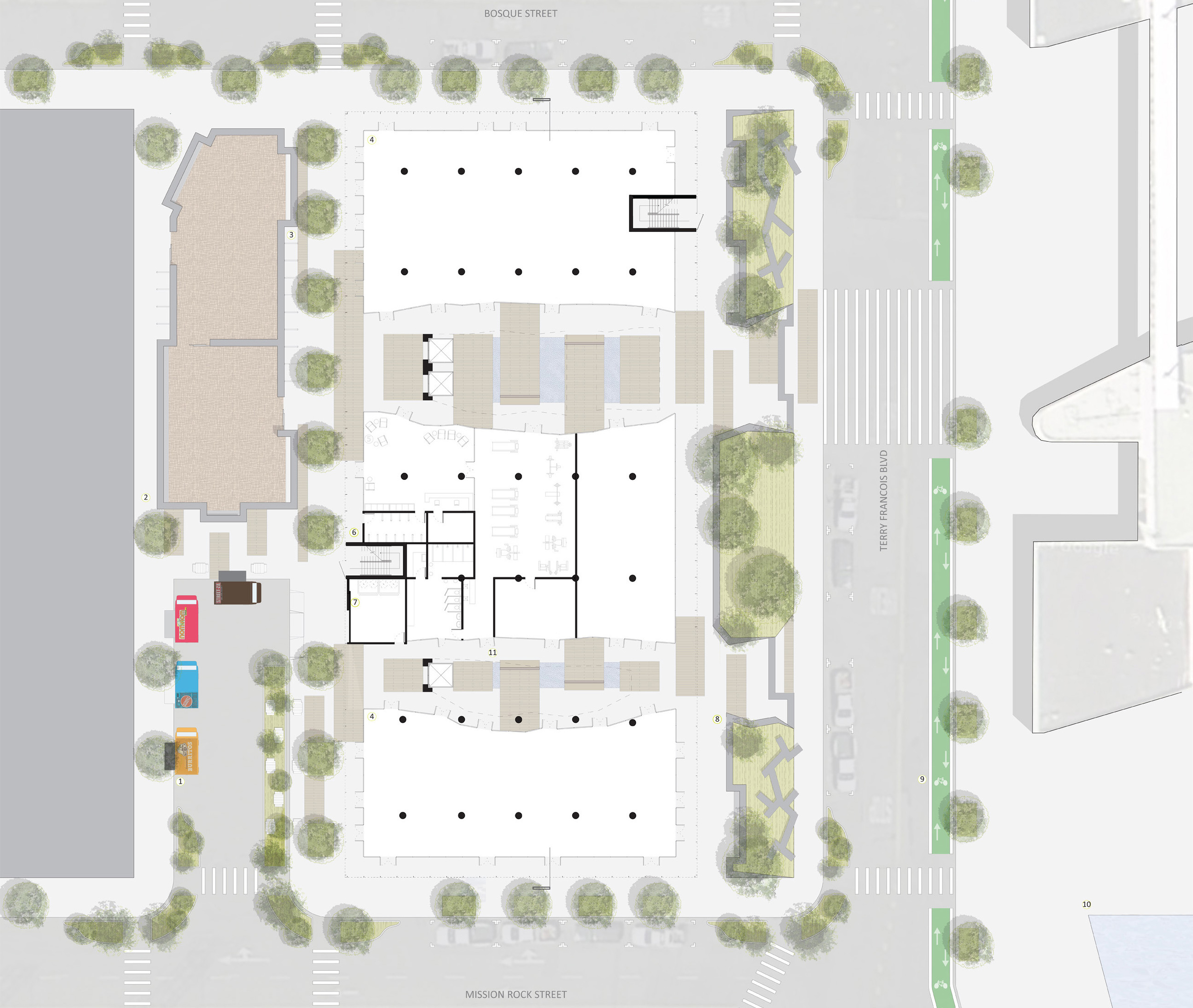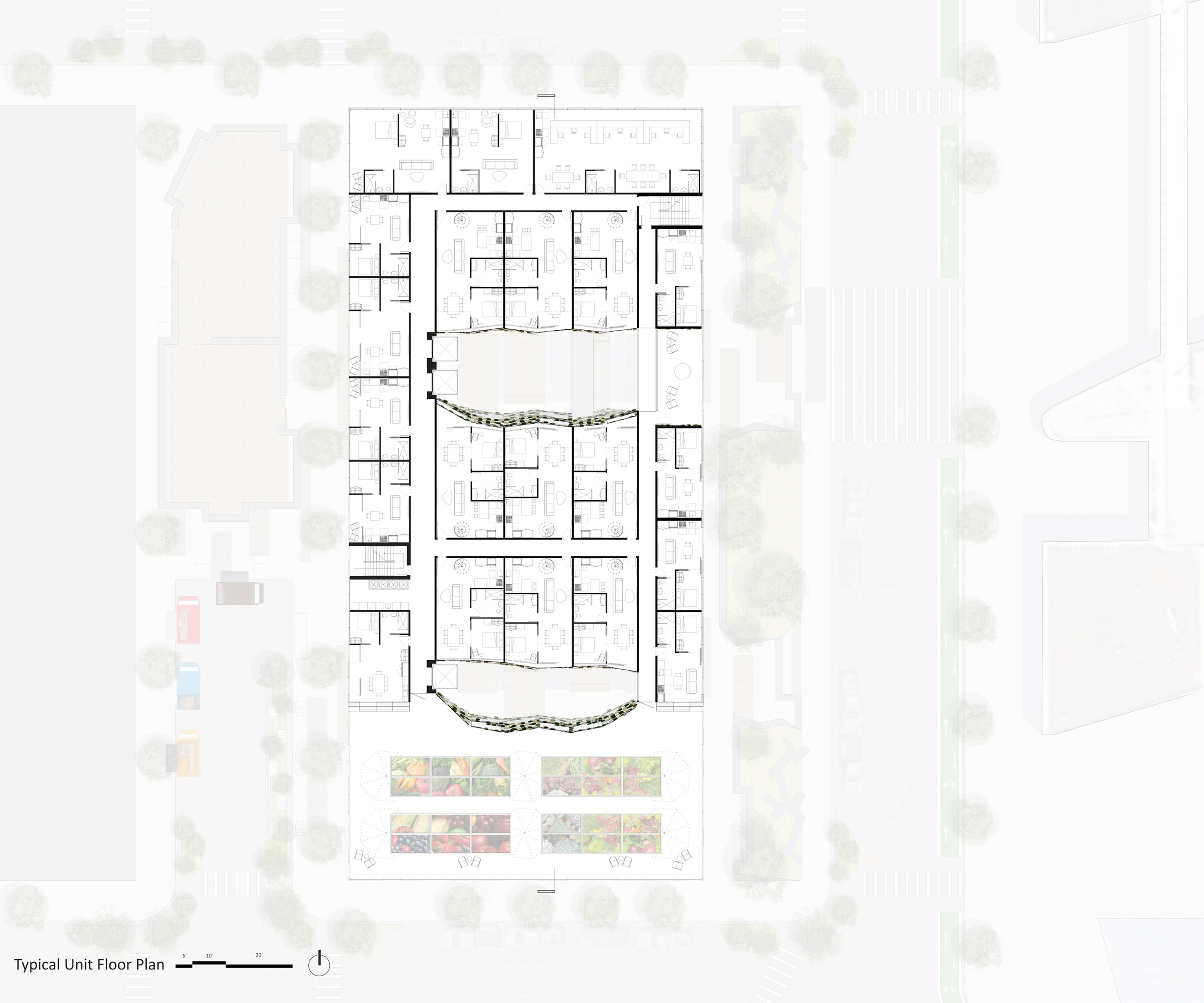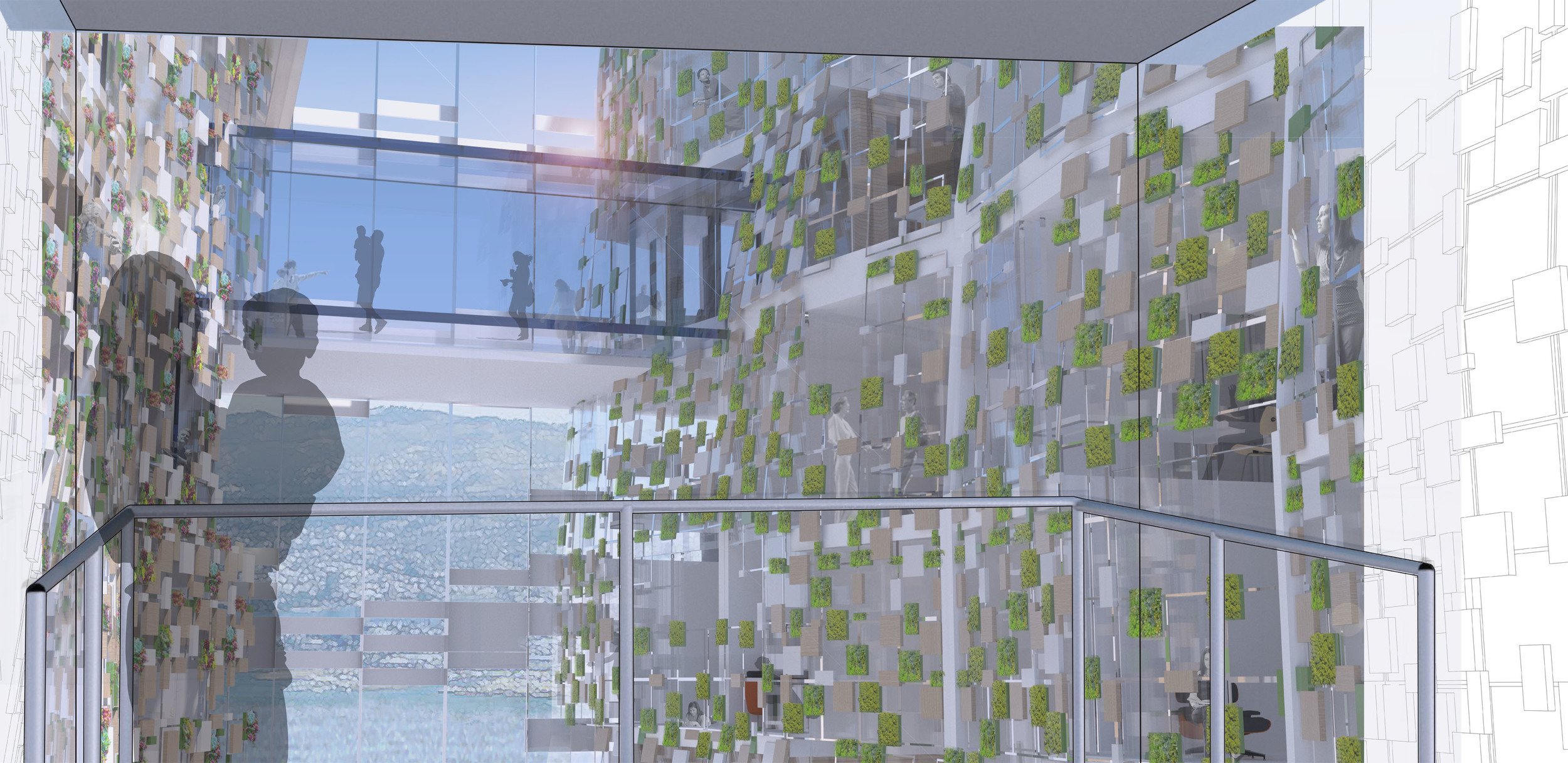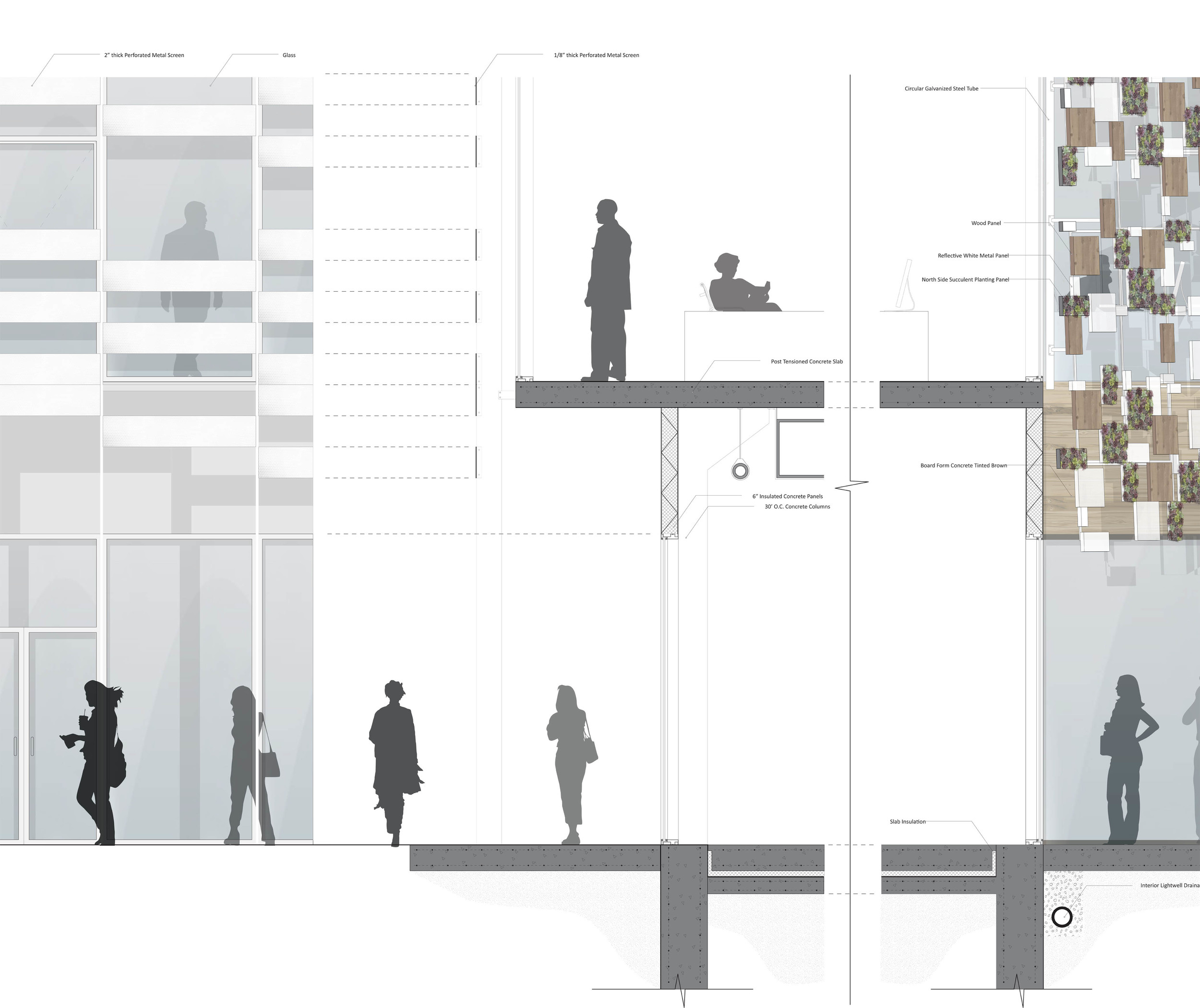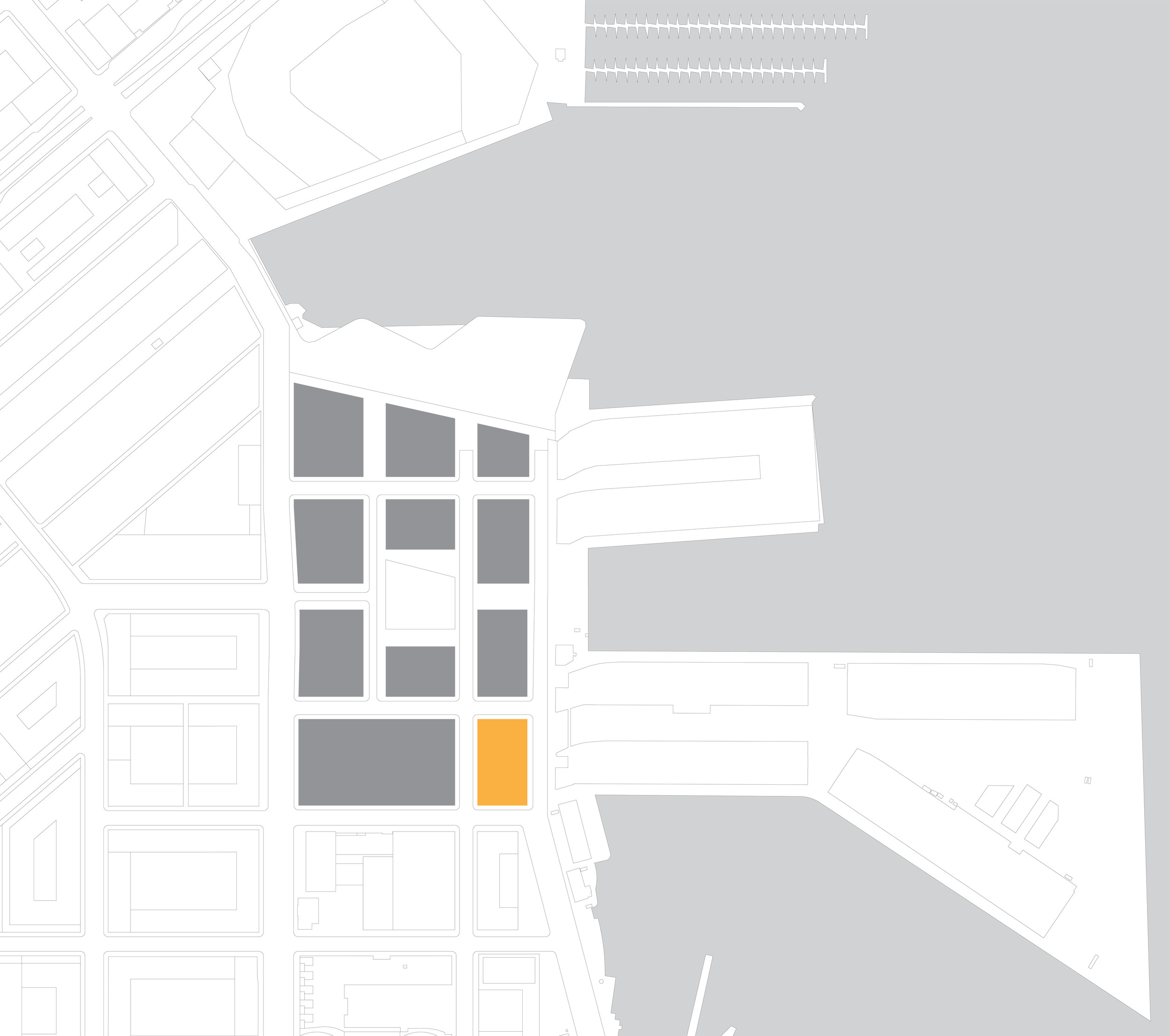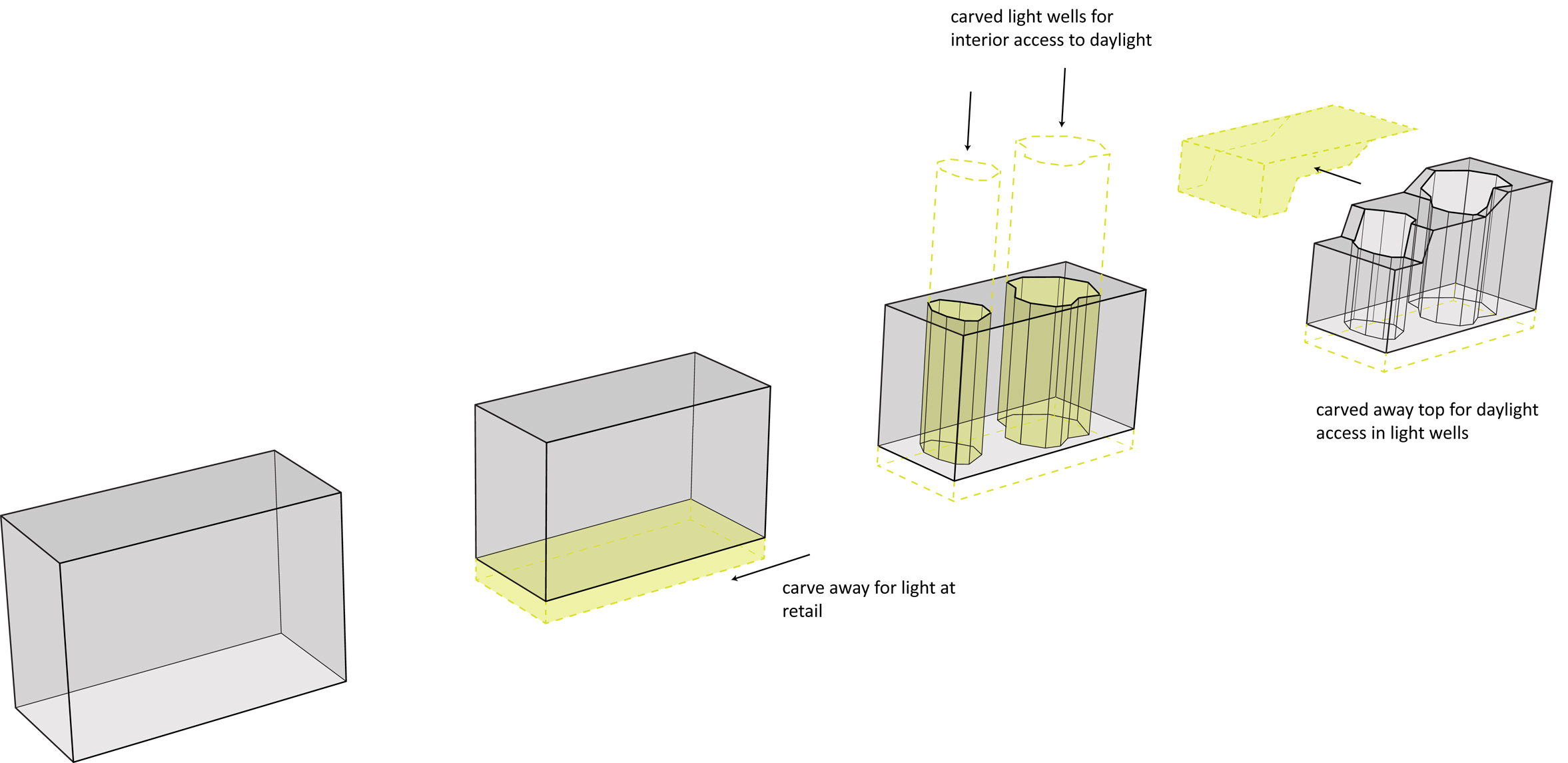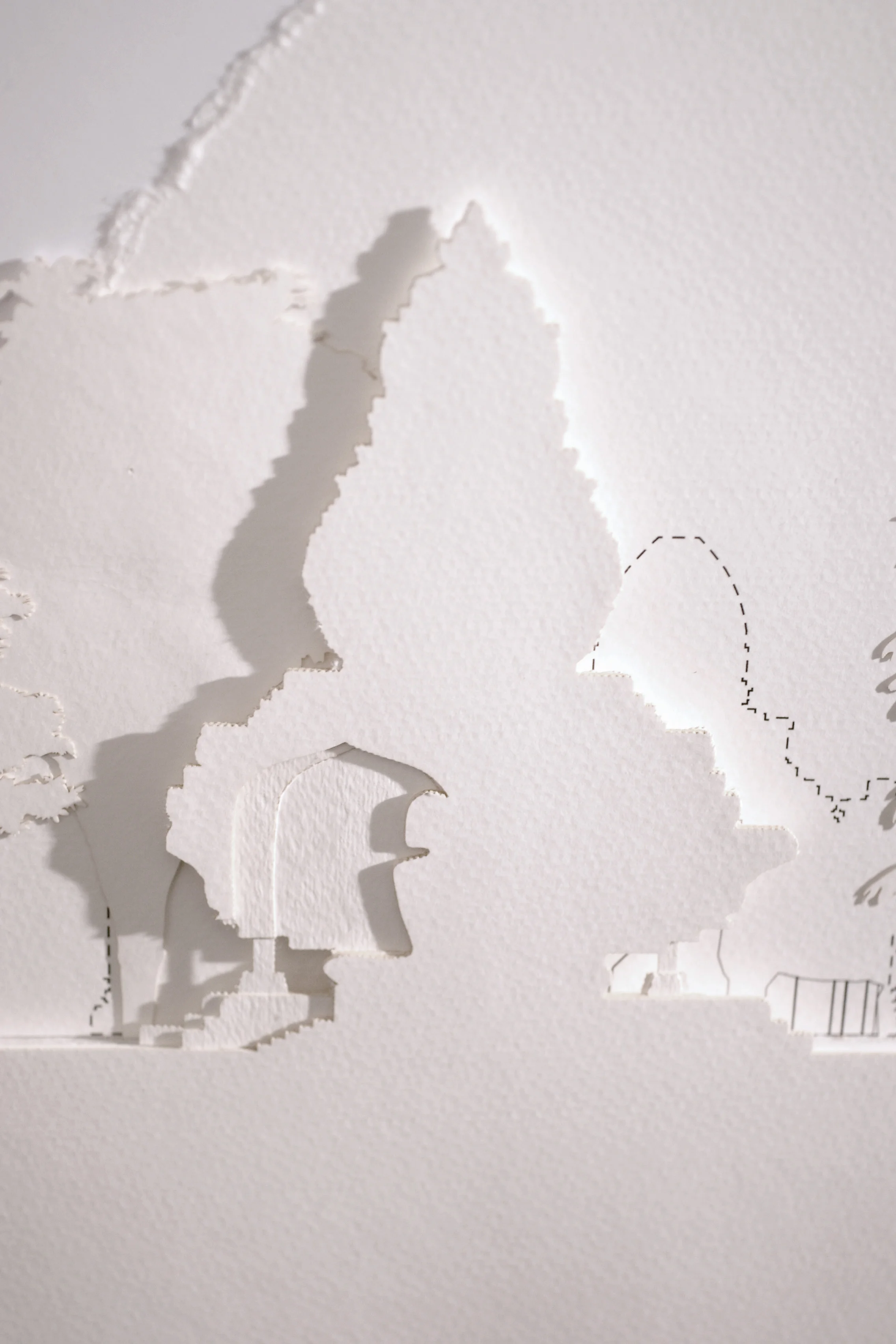Climate Response
By leveraging the resources that are, or could occur, locally: bio-fuel, methanogenesis, solar radiation (up to 23 hours at some points in the year), and waste heating, a variety of techniques and architectural strategies are created on the S, M, L, and XL scale to allow for a more varied and targeted climate response in both the pneumatic membranes and The Hub.
Pneumatic Membranes: a system of pneumatic panels at can be assembled on site become the new envelope for up to 4 houses. These membranes are the insulative barrier to the harsh winter temperatures and allow for the creation of microclimates for the houses underneath. The microclimates allow for a gradient of temperatures, and in the winter time the microclimates range from the extreme cold of the outdoors (down to -60F), to a more tempered indoor/outdoor space between the houses, and finally to the warm interiors of the houses. In the summer membranes function as greenhouses and for increased ventilation and community connections the side panels are removable. Most houses currently run on gas and the envelopes created by the membranes and the increased proximity of houses underneath of the membranes allow fuel to be used more efficiently. Once installed photovoltaic panels are installed on the most southern facing side allowing the houses within to receive solar energy.
The Hub: within The Hub microclimates are also created with various tempered zones that allow for a range of social activities. The microclimates in The Hub create greenhouse areas in the summer and gather community areas within, making them more efficient year around. The Hub also has photovoltaic panels as well as internal systems that decompose plant and human waste for bio-fuel and the propagation of methanogenesis through the harnessing of methane gas can be used for cooking, heating, and electricity.
Social Response
Currently, no space for unexpected engagement or improvised interaction exists. Studies of community spaces show that they are not being used efficiently and there are numerous missed opportunities for interaction between activities.
Pneumatic Membranes: the membrane attempts to address the issues of community fragmentation by creating micro-neighborhoods that allow for families and relatives to congregate under the same membrane. These shared spaces are programmed specifically for private and communal gathering. Private areas act as garage space, food storage, and dog lots, while communal gathering areas allow for community gardens, outdoor play in the winter, and shared eating.
The Hub: specific buildings and programs are concentrated into the hub on the basis of usage frequency and number of users. The Hub takes programs that are disparate across the town and brings them into one social center. This allows for a better use of resources as well as new social overlap between spaces and programs. By concentrating the important aspects of the town it is able to become the heart of the community and when relocation is decided upon the life of the community can move uninterrupted.
Relocation
As a way to facilitate an easier transitions between the existing and new relocation site a narrative timeline is crafted in which the new relocation process occurs. This recognizes that relocation could be a potentially continuous affair that creates a new community dynamic and relationship to the act of relocating that is more akin to a seasonal nomadic lifestyle.
Existing: Existing houses are HUD homes not built for the climate and therefore use resources inefficiently; on top of that there is a missed opportunity from the lack of density of houses.
Huddle: The existing houses huddle and densify so that membranes can more efficiently use space and energy
Membrane Deployment: Membranes are erected in the summer and can inflate to cover 2 to 4 houses creating micro-neighborhoods. This starts the solar generation process and addresses community fragmentation.
Hub Arrival: The Hub arrives in the winter and the community starts to fill it with program
House Migration: When relocation is decided upon by the community in the winter the pioneer homes on triodetic foundations are fitted with skis and dragged behind the hub as it moves to the new location. The hub then stays with the pioneer community to act as infrastructure throughout the winter.
Hub Returns: In the beginning of the warm season the hub returns to the original community.
Village Deconstruction: In the summer the membranes and materials from the original town are deconstructed and loaded on to the hub for transportation to the new location
Final Destination: At the new location membranes are deployed again and wrap around the transported and new houses on site. Until construction is finished the hub acts as temporary housing and infrastructure for the community.
















